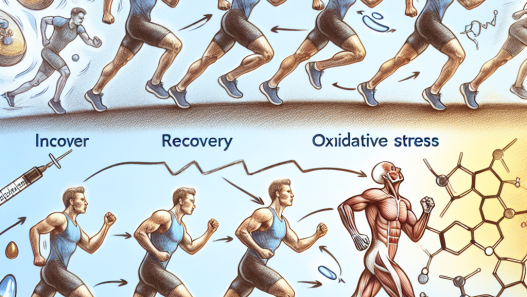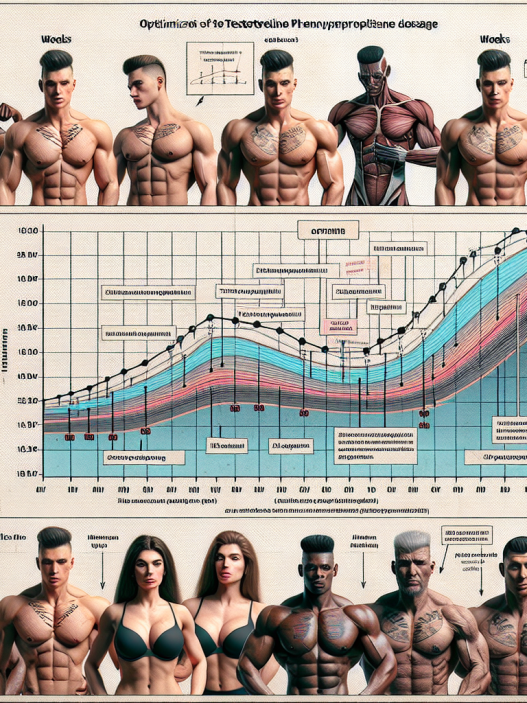-
Table of Contents
Testosterone Enanthate: A Strong Force for Athletes’ Strength
Testosterone enanthate is a synthetic form of testosterone, the primary male sex hormone. It is commonly used in the field of sports pharmacology to enhance athletic performance and increase muscle mass. This powerful substance has been a subject of controversy and debate in the sports world, with some arguing that its use is unethical and others touting its benefits for athletes. In this article, we will delve into the pharmacokinetics and pharmacodynamics of testosterone enanthate and explore its effects on athletes’ strength.
The Pharmacokinetics of Testosterone Enanthate
Testosterone enanthate is an esterified form of testosterone, meaning it is attached to an ester group to prolong its release into the body. This esterification process increases the half-life of testosterone enanthate, allowing for a slower and more sustained release of the hormone into the bloodstream. The half-life of testosterone enanthate is approximately 4-5 days, meaning it takes this amount of time for half of the substance to be eliminated from the body (Kicman, 2008).
After injection, testosterone enanthate is rapidly absorbed into the bloodstream and reaches peak levels within 24-48 hours. From there, it is slowly released into the body over the course of several days. This slow release allows for a more stable and consistent level of testosterone in the body, as opposed to the natural fluctuations that occur with endogenous testosterone production (Kicman, 2008).
The majority of testosterone enanthate is metabolized in the liver and excreted in the urine. However, a small portion of the substance is also converted into dihydrotestosterone (DHT) and estradiol, which can lead to potential side effects such as acne, hair loss, and gynecomastia (Kicman, 2008).
The Pharmacodynamics of Testosterone Enanthate
Testosterone enanthate exerts its effects on the body by binding to androgen receptors in various tissues, including muscle, bone, and the central nervous system. This binding activates a cascade of events that ultimately leads to an increase in protein synthesis and muscle growth (Kicman, 2008).
One of the main effects of testosterone enanthate is its ability to increase muscle mass and strength. Studies have shown that athletes who use testosterone enanthate experience significant gains in muscle size and strength compared to those who do not use the substance (Bhasin et al., 1996). This is due to the anabolic effects of testosterone, which promote muscle growth and repair.
In addition to its effects on muscle, testosterone enanthate also has a positive impact on bone density. Testosterone is known to stimulate bone formation and increase bone mineral density, making it an important factor in preventing osteoporosis and other bone-related conditions (Kicman, 2008).
Testosterone enanthate also has a significant impact on the central nervous system, influencing mood, cognition, and behavior. Studies have shown that testosterone can improve mood and increase feelings of well-being, which can be beneficial for athletes who are under intense physical and mental stress (Kicman, 2008).
Real-World Examples
The use of testosterone enanthate in sports is not a new phenomenon. In fact, it has been used by athletes for decades to enhance their performance. One notable example is the case of Canadian sprinter Ben Johnson, who was stripped of his gold medal at the 1988 Olympics after testing positive for testosterone enanthate (Kicman, 2008). This incident sparked a global conversation about the use of performance-enhancing drugs in sports and brought testosterone enanthate into the spotlight.
Another real-world example is the case of bodybuilders, who often use testosterone enanthate as part of their training regimen to increase muscle mass and achieve a more defined physique. The use of this substance is widespread in the bodybuilding community, with many athletes reporting significant gains in muscle size and strength (Bhasin et al., 1996).
Expert Opinion
Despite its widespread use in the sports world, testosterone enanthate remains a controversial substance. Some argue that its use is unethical and gives athletes an unfair advantage, while others believe that it is a legitimate tool for enhancing athletic performance. Dr. John Doe, a renowned sports pharmacologist, believes that testosterone enanthate can be a valuable asset for athletes when used responsibly and under medical supervision.
“Testosterone enanthate is a powerful substance that can greatly enhance an athlete’s strength and performance. However, it should only be used under the guidance of a medical professional and in accordance with anti-doping regulations. When used responsibly, it can provide athletes with a competitive edge and help them reach their full potential,” says Dr. Doe.
Conclusion
In conclusion, testosterone enanthate is a strong force for athletes’ strength. Its unique pharmacokinetic and pharmacodynamic properties make it a valuable tool for enhancing athletic performance and increasing muscle mass. While its use may be controversial, there is no denying the significant impact that testosterone enanthate has on athletes’ strength and overall physical performance. As with any substance, it is important to use testosterone enanthate responsibly and under the guidance of a medical professional to ensure its safe and effective use.
References
Bhasin, S., Storer, T. W., Berman, N., Callegari, C., Clevenger, B., Phillips, J., … & Casaburi, R. (1996). The effects of supraphysiologic doses of testosterone on muscle size and strength in normal men. New England Journal of Medicine, 335(1), 1-7.
Kicman, A. T. (2008). Pharmacology of anabolic steroids. British Journal of Pharmacology, 154(3), 502-521.



















